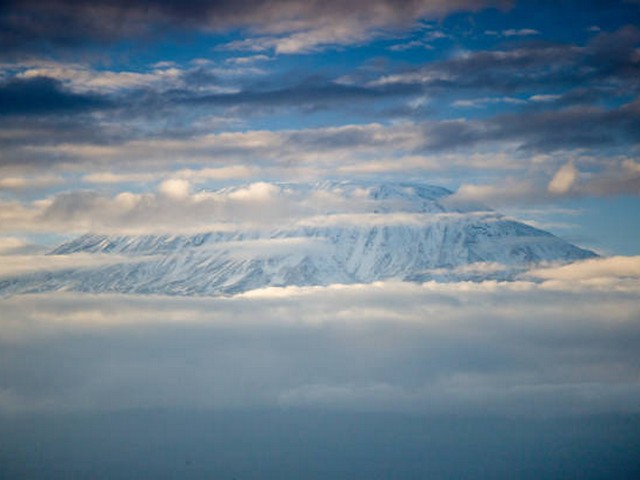Conquering Heights Safely: Kilimanjaro Trekking and Altitude Sickness Prevention
Embracing the Roof of Africa with Confidence and Care
Mount Kilimanjaro, the towering peak that stands as a beacon of adventure in Tanzania, calls to the hearts of trekkers worldwide. Known as the "Roof of Africa," this majestic mountain offers more than just a climb; it presents a journey through diverse ecosystems, from lush rainforests to arid alpine deserts, culminating in the icy spectacle of its summit. However, the thrill of ascending to 5,895 meters (19,341 feet) is not without its challenges, chief among them being the risk of altitude sickness. At the Kilimanjaro Centre for Trekking and Ecotourism (KCTE), we are committed to ensuring that your journey to the summit is as safe as it is exhilarating. This guide on "Kilimanjaro Trekking and Altitude Sickness Prevention" is designed to prepare and inspire you for a successful climb.
Understanding Altitude Sickness
What is Altitude Sickness?
Altitude sickness, or acute mountain sickness (AMS), occurs when you cannot get enough oxygen from the air at high altitudes. This can lead to headaches, dizziness, nausea, exhaustion, and difficulty sleeping. As you ascend Mount Kilimanjaro, the reduced air pressure and lower oxygen levels can challenge even the most experienced trekkers.
Why is it a Concern on Kilimanjaro?
The rapid ascent possible on some Kilimanjaro routes makes climbers particularly susceptible to AMS. Preventing altitude sickness is not just about comfort; it’s crucial for your safety. Understanding and preparing for these conditions is the key to a successful and enjoyable climb.
Preventative Strategies for Healthy Ascent
Gradual Acclimatization
Our climbing schedules at KCTE are designed to encourage gradual acclimatization. By spending more days on the mountain, you increase your body’s ability to adapt to higher elevations. Opt for routes like the Lemosho or the Machame, which allow for a slower ascent and thus better acclimatization.
Hydration is Key
Dehydration is a common contributor to altitude sickness. Drinking plenty of water helps maintain your circulation and reduces the risk of AMS. Aim for at least four liters of water per day as you climb Kilimanjaro.
Balanced Diet and Nutrition
Eating a balanced diet rich in carbohydrates provides the energy needed for such a strenuous activity. Our KCTE meals are specially planned to maximize your energy and ensure proper nutrition throughout your trek.
Listen to Your Body
Recognizing the symptoms of altitude sickness early is vital. Our experienced guides at KCTE are trained to monitor climbers for any signs of distress and can make critical decisions about the pace and progression of your trek.
Choosing the Right KCTE Route for Acclimatization
Lemosho Route: The Scenic Path
The Lemosho Route is renowned not only for its beauty but also for its optimal acclimatization profile. This longer expedition allows your body ample time to adjust to higher altitudes, enhancing your overall climbing experience.
Machame Route: The Whiskey Route
Popularly known as the "Whiskey" route, the Machame offers a slightly steeper challenge but with the benefit of better acclimatization opportunities compared to the quicker Marangu or "Coca-Cola" route.
Kilimanjaro Trekking with KCTE: Why Us?
At the Kilimanjaro Centre for Trekking and Ecotourism, we combine local expertise with a deep passion for our majestic mountain. Our guides are not only experienced but also certified in wilderness first aid and rescue operations, ensuring that safety is paramount. By booking your Kilimanjaro adventure with KCTE, you choose a partner who values your well-being and your experience.
FAQs on Climbing Kilimanjaro
What is the best time of year to climb Kilimanjaro?
The best times to climb Kilimanjaro are during the dry seasons: January to mid-March and June to October. These months offer the clearest skies and the least precipitation.
How fit do I need to be to climb Kilimanjaro?
While you don’t need to be an elite athlete, a moderate level of fitness is necessary. We recommend starting a training regimen at least three months before your climb, focusing on cardio, strength training, and hiking.
Can children climb Kilimanjaro?
Yes, children over the age of 10 are allowed to climb Kilimanjaro. However, it’s crucial to ensure they are adequately prepared and understand the challenges ahead.
What should I pack for my Kilimanjaro trek?
Packing the right gear is essential for your comfort and safety. Essentials include thermal layers, a high-quality sleeping bag rated for low temperatures, waterproof clothing, sun protection, and a durable backpack. KCTE provides a comprehensive packing list to all our clients.
Summiting with Safety and Joy
Climbing Kilimanjaro is a life-changing adventure that should be undertaken with respect for both the mountain and oneself. By understanding the risks associated with altitude sickness and taking proactive steps to prevent it, you set the stage for a truly unforgettable experience. With Kilimanjaro Centre for Trekking and Ecotourism by your side, you are not just climbing a mountain; you are embracing an adventure that will inspire stories for a lifetime.
Ready to take on the challenge? Book your Kilimanjaro climbing adventure with Kilimanjaro Centre for Trekking and Ecotourism (KCTE) today and step into a world of awe-inspiring beauty and personal triumph. Visit us at [your website] or contact us directly to start planning your journey to the top of Africa. Climb safe, climb inspired, climb with KCTE!




